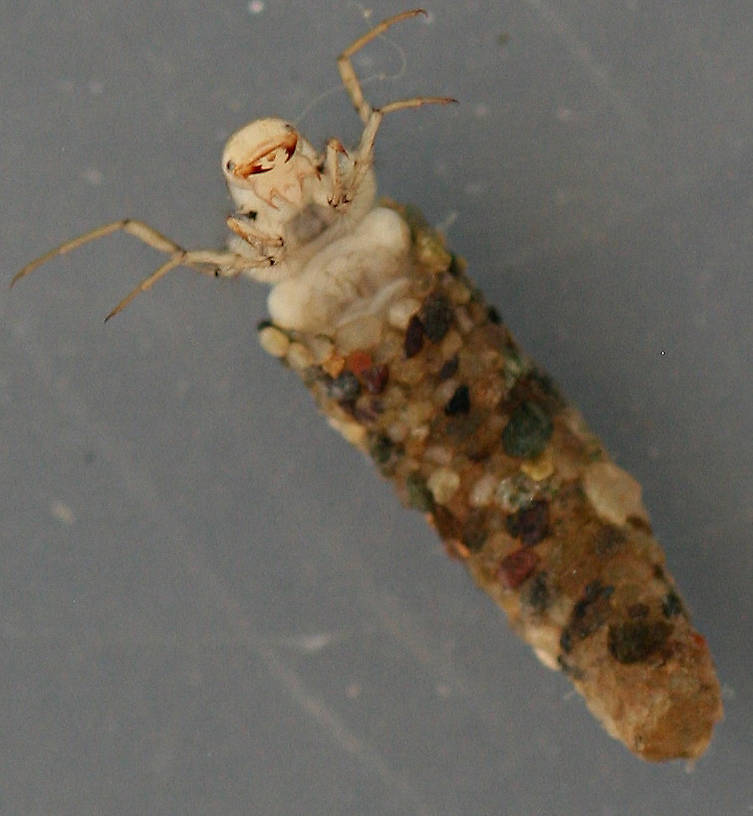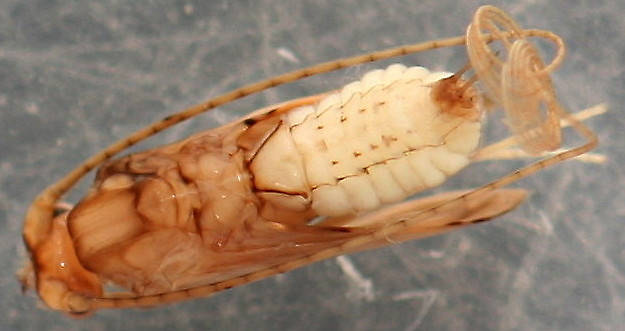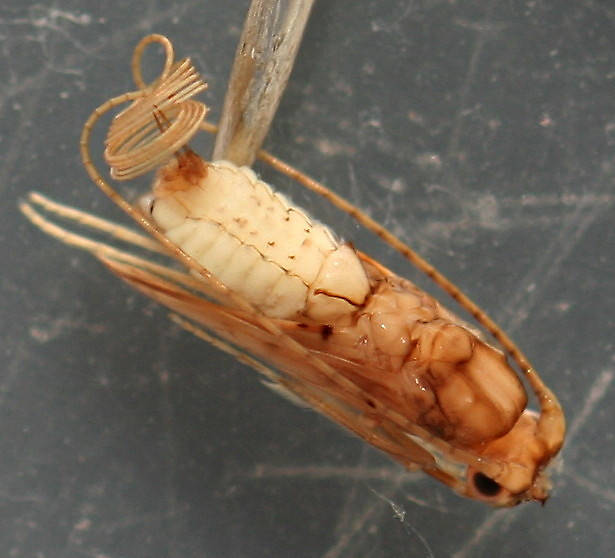Blog & Latest Updates
Fly Fishing Articles
Insects by Common Name


> > Oecetis sp. larvae and pupae
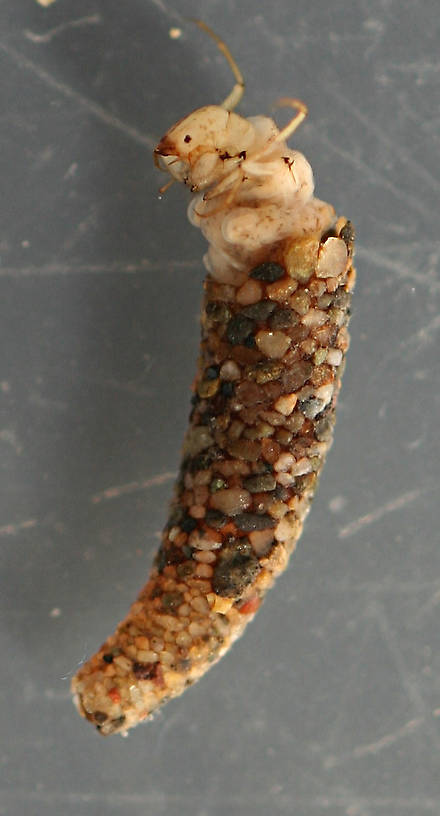
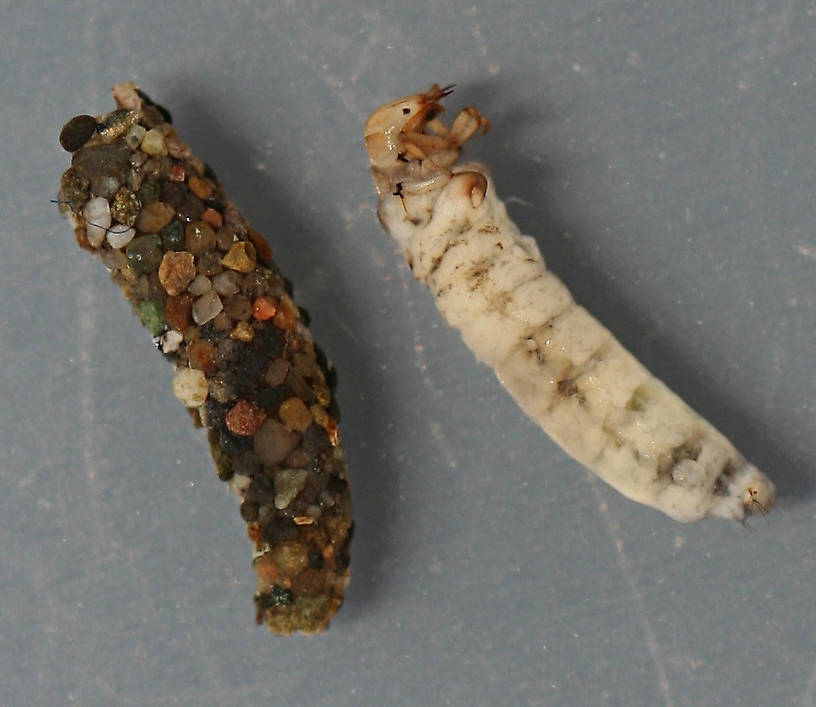
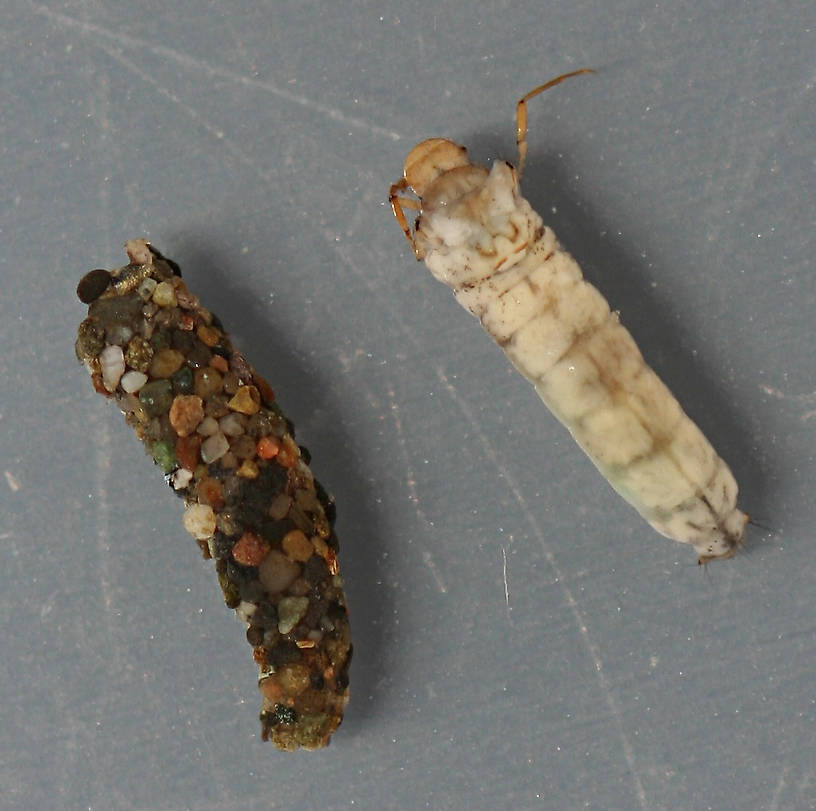
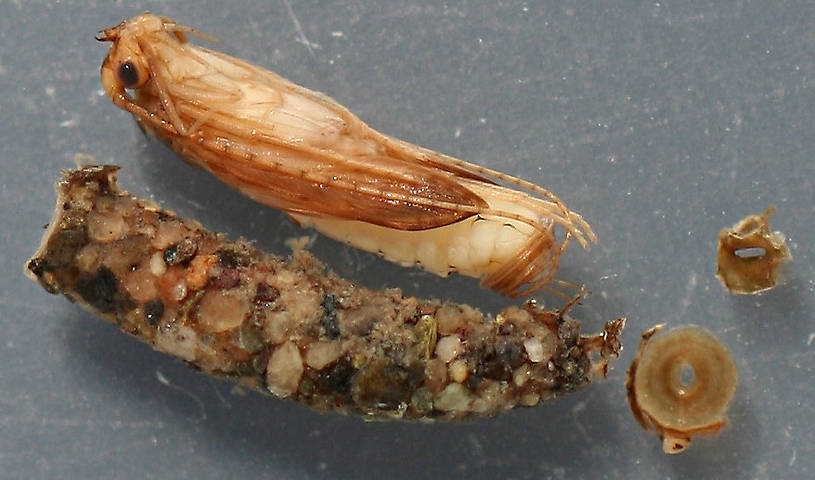
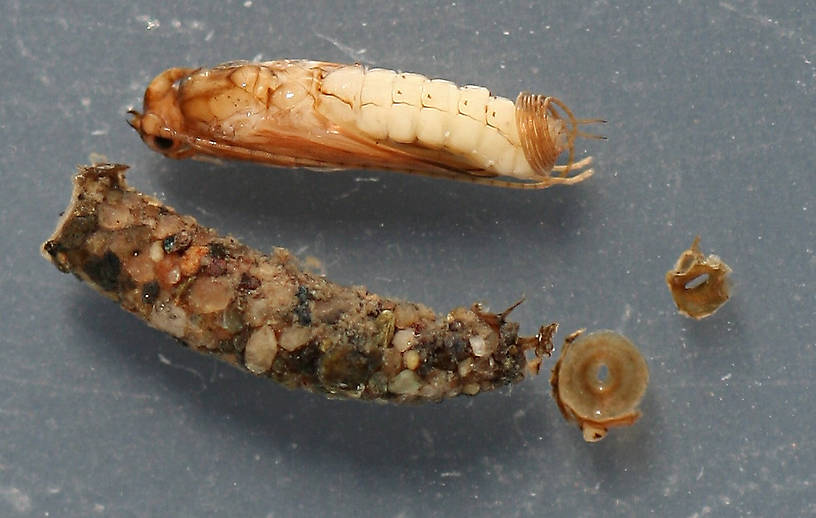
| Millcreek | July 5th, 2015, 6:35 pm | |
| Healdsburg, CA Posts: 356 | All of these were found in the Russian River. The larvae were found on gravel in a moderate current and the pupae were found in a fast current attached to cobbles. The pupae are often in aggregations on the cobble and attached by the front and back of the case. The shell is sealed with plugs at both ends. The larvae was identified to genus and the pupae to family using Merritt, Cummins and Berg (2008). The length of the larvae is 7 mm for the case and 6 mm for the larvae. For the pupae it is 8 mm for the case and 7mm for the pupae. All were found between April and July. | |
| Creno | July 5th, 2015, 8:09 pm | |
| Grants Pass, OR Posts: 305 | From what I can see it looks like there are two patches of hooks on the dorsal spacing hump. If so this is one of the O. avara group. There is a nice publication on the NA larvae (Floyd, M.A. 1995. Larvae of the caddisfly genus Oecetis (Trichoptera: Leptoceridae) in North America. Bulletin of the Ohio Biological Survey, New Series 10: 1-85.) that covers status at that time. There is alot of work to do yet in NA on the O. avara group. The larval sclerites seem very pale without the typical darker muscle scars. | |
| Millcreek | July 5th, 2015, 10:58 pm | |
| Healdsburg, CA Posts: 356 | Dave- Wasn't quite sure what you meant by the dorsal spacing hump. Put a couple extra photos in. I hope I got the area you were interested in. Mark | |
| Entoman | July 6th, 2015, 12:45 am | |
| Northern CA & ID Posts: 2604 | Hi Mark & Dave , I'm not sure, either. Are you talking about hook plates, Dave? I know about humps being used by some genera for spacing in their cases. It is believed to allow for better water circulation for their respiratory systems. I didn't know lepidostomids had them. BTW, great photos as usual Mark. Those coiled antennae in the pupae photos are fascinating! | |
| "It's not that I find fishing so important, it's just that I find all other endeavors of Man equally unimportant... And not nearly as much fun!" Robert Traver, Anatomy of a Fisherman | ||
| Millcreek | July 6th, 2015, 8:54 am | |
| Healdsburg, CA Posts: 356 | Hi Kurt- Thanks for the kind words about the photos. Incidentally, the photos aren't of a lepidostomid they're of a leptocerid which do have dorsal humps as well as ventral and lateral ones.:) Mark | |
| Entoman | July 6th, 2015, 10:36 am | |
| Northern CA & ID Posts: 2604 | Ah! No wonder I was confused.:) I'm sure Dave is talking about the dorsal hump. | |
| "It's not that I find fishing so important, it's just that I find all other endeavors of Man equally unimportant... And not nearly as much fun!" Robert Traver, Anatomy of a Fisherman | ||
| Creno | July 6th, 2015, 5:22 pm | |
| Grants Pass, OR Posts: 305 | I created too much confusion. I should have said the larval dorsal hump in the third pic to make it clear what I was looking at. I guess the primary NA authors today leave "spacing" out of their figure labels and discuss the usage/purpose in the text. Sorry I will try to do better. To my knowledge caddis pupae don't have comparable structures to the larval abdominal segment 1 humps, in form or function :-) | |
| Millcreek | July 6th, 2015, 6:29 pm | |
| Healdsburg, CA Posts: 356 | Dave- I understand now. I hadn't heard of using hook plates in larval placement. Just in placing pupae in family. Anyway, I took another look under the microscope and it does have the bottom two as hooked plates but the top two are another structure more closely resembling sclerites. | |
| Creno | July 7th, 2015, 2:00 am | |
| Grants Pass, OR Posts: 305 | I don't think they are really hook plates in the context of caddis pupae. The musculature would be completely different. But none the less they work to separate the O.avara group. There are lots of various setal patches on caddis larvae that have taxonomic use. | |
| Millcreek | July 7th, 2015, 11:41 am | |
| Healdsburg, CA Posts: 356 | Dave- Added some photos of mature Agapetus pupae. Thought you might like to know. http://www.troutnut.com/topic/8638/Agapetus-larva-and-pupa | |
Quick Reply
You have to be logged in to post on the forum. It's this easy:
Related Discussions
Troutnut.com is copyright © 2004-2024 Jason
Neuswanger (email Jason). See my FAQ for information about use of my images.
 privacy policy
privacy policy

